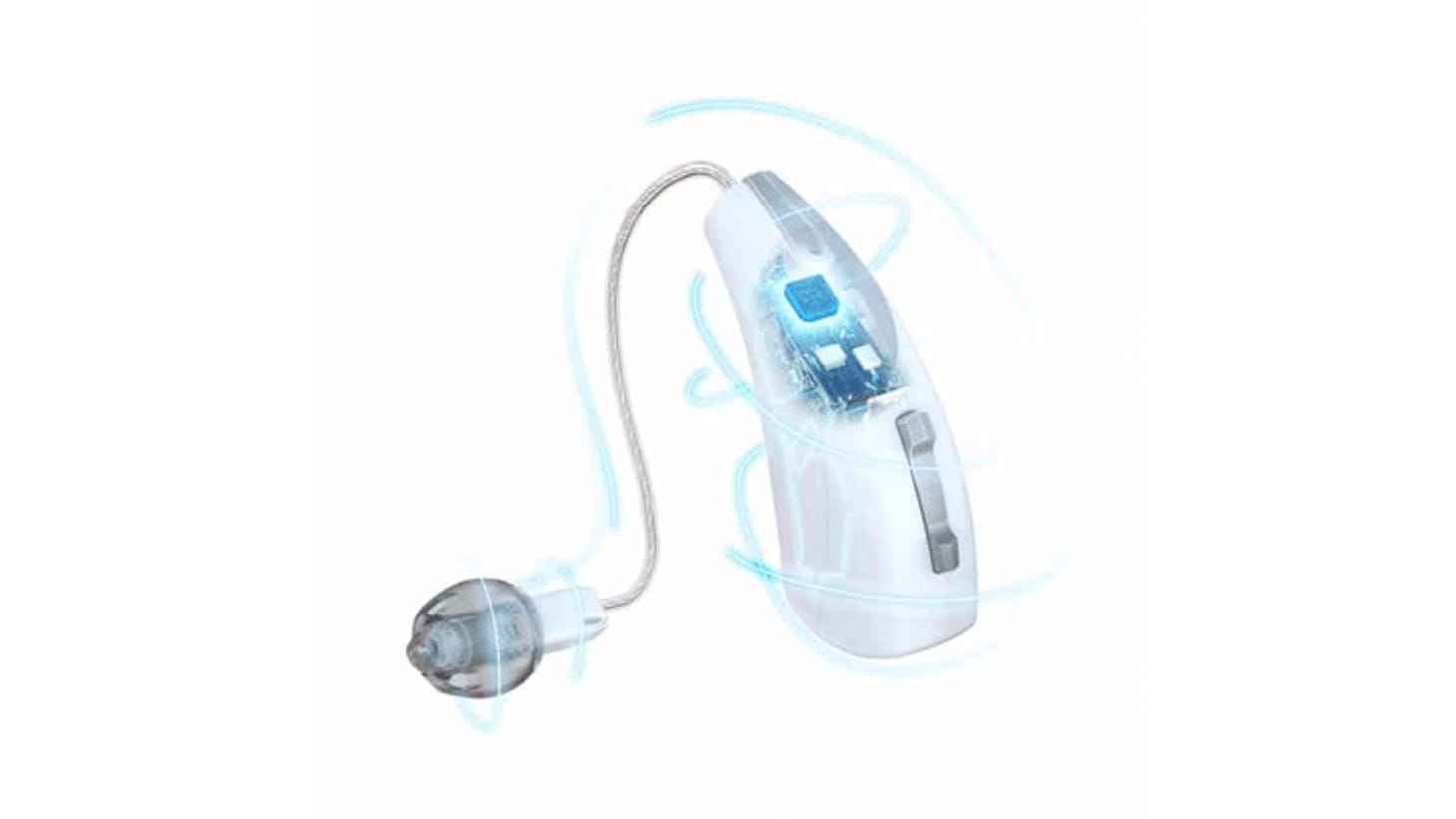Tiny in-ear biosensors enable killer hearing apps
New sensors are powerful enough to perform multiple tasks yet small enough to fit inside the ear canal, where blood flow is easily monitored.

Numerous new hearing-aid technologies are breaking through miniaturization thresholds and promising to deliver revolutionary hearing and health enhancements. At last week's 2019 CES consumer electronics conference in Las Vegas, a new generation of in-ear biosensors rose to the top of that list.
One standout was a new version of the Livio AI hearing aid from Starkey Hearing Technologies. It integrates a tiny biometric sensor that enables heart-rate measurement as well as fall-detection alerts from within a hearing aid for the first time. The hearing aid also features wireless streaming of audio from smartphones, integration with Google Assistant and Amazon's Alexa, voice-to-text transcription from the hearing aid to a smartphone app, and a rechargeable option.
The new biosensor is powerful enough to perform multiple tasks yet small enough to fit inside the ear canal, where blood flow is easily monitored. It makes Starkey a first mover among many hearing aid manufacturers and makers of hearables and personal sound amplifiers that will be delivering their own in-ear biosensor applications between now and next year's consumer electronics show.
Biosensor-maker Valencell, Inc. showed off the the Livio AI hearing aid at CES along with hearables from Jabra, Bose and other brands that also use its tiny components. At the same time, the North Carolina company highlighted the importance of the emerging hearing enhancement market by announcing a partnership with Sonion, long a leading provider of micro acoustic and micro mechanical technologies hearing aids and earphones. The two companies teamed up to to produce the next-generation BiometRIC sensor for receiver-in-the-canal hearing aids.
Treating a range of conditions
Recent hearing research indicates that hearing loss is linked to other chronic health conditions common at older age, including cognitive issues, diabetes, and cardiovascular disease. So if a hearing aid user suffers from cardiovascular issues, continuous biometric monitoring from an in-ear sensor can identify positive or negative trends, enabling more effective disease management at low costs.
“Putting an accurate biometric sensor in a receiver-in-canal hearing aid is a huge step toward mitigating many of the comorbidities involved with hearing loss,” says Dr. Steven LeBoeuf, President & Co-founder of Valencell. “Many of these co-existing conditions can benefit from continually monitoring heart rate, activity levels, and blood pressure.”
Starkey said fall detection is one of many health-related applications enabled by the new biosensors. According to the National Council on Aging, emergency rooms across the country on average treat older adults for fall-related injuries every 11 seconds. The Livio AI hearing aid can detect falls and send alert messages to selected contacts. Starkey added it incorporated "significant new inventions" to flag only true falls and avoid false-positives.
“Livio AI and its fall-alert feature will not only provide peace of mind to caregivers but could potentially saves lives ,”said Bill Austin, Founder and CEO of Starkey Hearing Technologies.
More miniaturization will deliver more breakthroughs
What are some of the other tiny components that will enable a new generation of killer hearing apps? Smaller rechargeable batteries, higher bandwidth wireless communication, smaller low-power Bluetooth components, smaller high-function directional microphones, and smaller receivers providing higher fidelity audio are just a few.
Hearing aid component and subsystem developers such as Atlazo, Intricon, and Alango are busy developing chip-based health-monitoring technologies specifically for hearing aids and the emerging hearables market. It's safe to predict that the innovations announced at this year's CES conference are only the tip of an iceberg that promises to upend the entire hearing health industry.
Hearing Mojo Newsletter
Join the newsletter to receive the latest updates in your inbox.